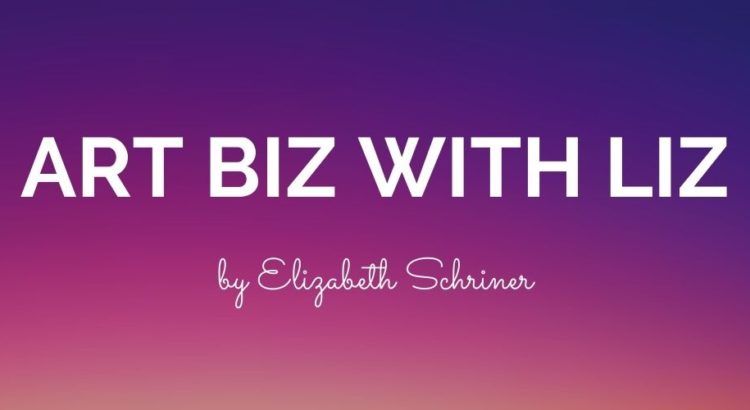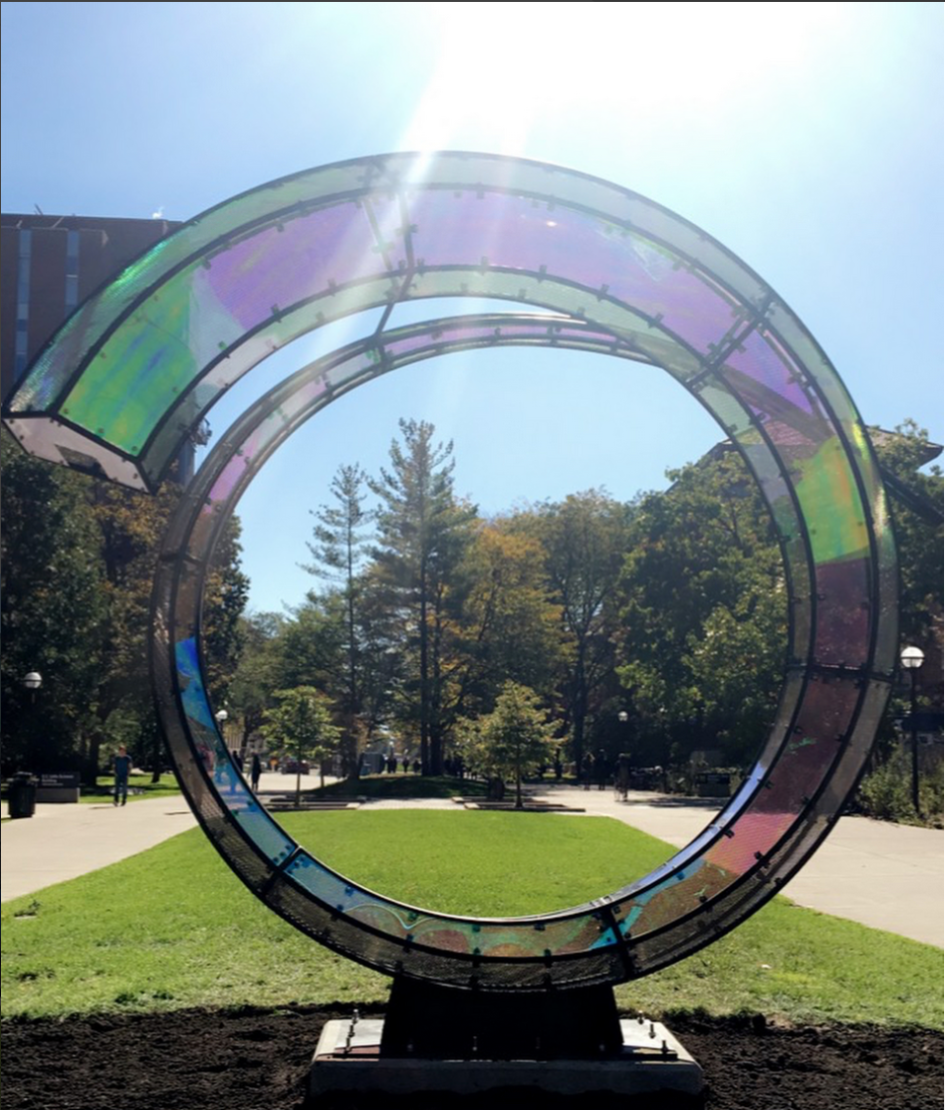I received the email from Joe on April 7th: “Wednesday, May 4th will be the official LAST DAY to post your column!”
No biggie, I thought at the time. May 4th was still nearly a month away. I had multiple weeks to write more posts about the arts before I graduated and went on my merry way. But life grew too busy. Finals season began at that same time future plans were being made, and there was no time to catch my breath before the series of graduation ceremonies hit. Before I knew it, I landed here, on May 4th, to say my goodbye to arts, ink. and a huge part of my life at Michigan.
I have a million things to say and one post to articulate them. Part of me isn’t ready to post this piece, either, because it’s the last one. The very end. When I told people about my writing endeavors here at the university, I used to refer to my writings with arts, ink. as “silly little blog posts about art,” which were in stark contrast to the seriousness of academic writing or my other work at the Michigan Daily and in literary magazines. But in a way, as discussed in a previous post, my work at arts, ink. has also been a time capsule. I didn’t always dedicate the amount of time and energy to them as I wish I had, but it’s neat to have been able to churn out weekly writings across the span of four school years. Looking back, it’s also been nice to become involved with the arts in numerous ways. I’ll spare you from the extensive trip down memory lane, but I’ll close out with some of the artistic feats I’ve been involved with this past semester.
Part I: Writing
I’ve always loved to write, but as time went on, I found it increasingly difficult to make myself sit down and write on my own accord. The University of Michigan has been a blessing in its plethora of opportunities in this sense, but as a creative writing & literature major, I found myself lacking in experience compared to my peers. I used to think it was a blessing to be “well-rounded” in interests and pursuits, but this proved to be challenging once I had to pick a major (and thus limit myself in what I learned from that point on). I can say, however, that as much as I’ve had doubts about my majors, my abilities, and myself throughout college, I’m proud of the work I’ve created in regard to my two senior honors theses, which earned high honors and highest honors.
If you’ve been reading my posts throughout the past year, you may have noticed my (potentially annoying) mentioning of my honors theses. This was never meant to be a brag or complaint but rather commentary on something that took up much of my time and focus the past year and a half. People often told me I was crazy for writing two theses (one for each of my majors), but doing so seemed like the natural culmination of my studies and time at U-M. They allowed me to challenge myself while narrowing in on specific subjects of interest. For my creative writing & literature major, specifically, I wanted to challenge myself in writing a longer piece of work. The disciplined yet supportive structure of writing an honors thesis allowed me to do so, and I ended up with a longer novella at 135 pages.
Since these posts are all about the arts, I’ll focus on my creative writing thesis. When I think about the sort of person I wanted to connect to my writing, why the story is important, and what I hoped people would get out of it, there are several things that came to mind. My novella is a coming-of-age story centered on complicated family dynamics, but it also speaks to culture and identity. The main character, Christi, is a mixed Chinese-Filipino American whose father is white and mother is an immigrant from the Philippines, which resembles my situation. Growing up, I loved the young adult genre, but I didn’t find many stories that included the main character with an identity like mine. There are many layers to being a mixed Asian American, and when Christi visits her mother’s homeland, she is challenged with all sorts of inner turmoil surrounding identity and culture that accompany the central storyline. Christi’s perspective when she visits the Philippines is often ignorant yet candid. The teenage viewpoint offers an interesting means to express culture shock and family conflict. Overall, I didn’t want to write a story simply for representation, but I am hoping that setting the story in the Philippines yet from the point of view of a young American can engage readers with a different place/culture in a way that’s accessible and relatable.
As previously mentioned, I’m interested in a variety of subjects, which is great in granting me different lenses, perspectives, and experiences to inform my writing. I’ll admit, however, that being stretched out across different academic disciplines means I don’t practice writing nearly as much as I should or as many of my peers do. I’ve struggled with writer’s block and self-discipline in the past, so it was interesting to approach a project with such high expectations for myself despite a limited timeframe. I consistently produced 5-10 pages of new content each week for a semester and a half, which I’ve never been able to do before. There was a lot of crappy writing, and much of it ended up being cut, but simply getting content on the page was the first step toward getting a whole draft together. In the past, I would always get bogged down with edits, whereas with my thesis I didn’t really have that option if I wanted to finish it in time. That would be my advice to others wanting to write a novella/novel – write! You can get trapped by constantly editing/revising, but you can always do that after you have more content to work on. There’s still a lot of work to be done on it, but it would be amazing if I could revise my thesis and turn it into a novel one day. Books have always served as an escape for me, and I hope that one day, my writing can have a positive impact on someone else.
Part II: Music
On the morning of April 30th, I strolled past the hoard of graduates lined up outside the Big House until I reached the designated “Glee Club Check-In” sign. Once inside Michigan Stadium, a select number of members from the Men’s and Women’s Glee Clubs stood in the center of the field on a circular stage. Underneath a cloudy sky, our fingertips numbed in the cold as we waited for the agonizing ten minutes to pass before the opening procession and cue to sing occurred. As dreary as the atmosphere seemed, however, I’d do anything to go back in time to experience what came next.
Graduating was cool and all, but singing “The Star Spangled Banner” in the Big House and hearing the applause from thousands of people was magical. I already miss the “sisterhood” of “song and strength” I was once skeptical of, but I hope to always cherish the feelings of excitement and gratitude I had on graduation day. These emotions encompass how I feel about my time at U-M in general. I could make this post even longer by discussing the bell towers or concerts that have also contributed to my music experience here at the university, but I’ll leave it at that.
Part III: Sculpture
Even though my academic and career goals shifted away from the arts, I always made it a point to still keep them in my life. I never took fewer than 16 credits in a given semester, yet I still couldn’t take all the classes I wanted to or found interesting. There just wasn’t the time. I knew from the very start, however, that I wanted to take some sort of visual arts class during my senior year. I had already taken drama courses and music courses as electives, but I really wanted to learn more about painting or sculpture.
I am so, so happy I did. RCARTS 270 with Raymond Wetzel was one of the best classes I took at U-M. I learned a lot about working with different materials and tools while having tons of fun in the process (wow, homework in a college class can be enjoyable!). I worked with materials such as wood, cement, and clay to create a variety of mixed-media art works, and I learned different techniques for casting, constructing, and assembling sculptures. I’ll end this chaotic post with an equally jumbled collage of images featuring art pieces both in progress and completed. Oh, and I’ll throw in my artsy graduation cap, because why not.






































